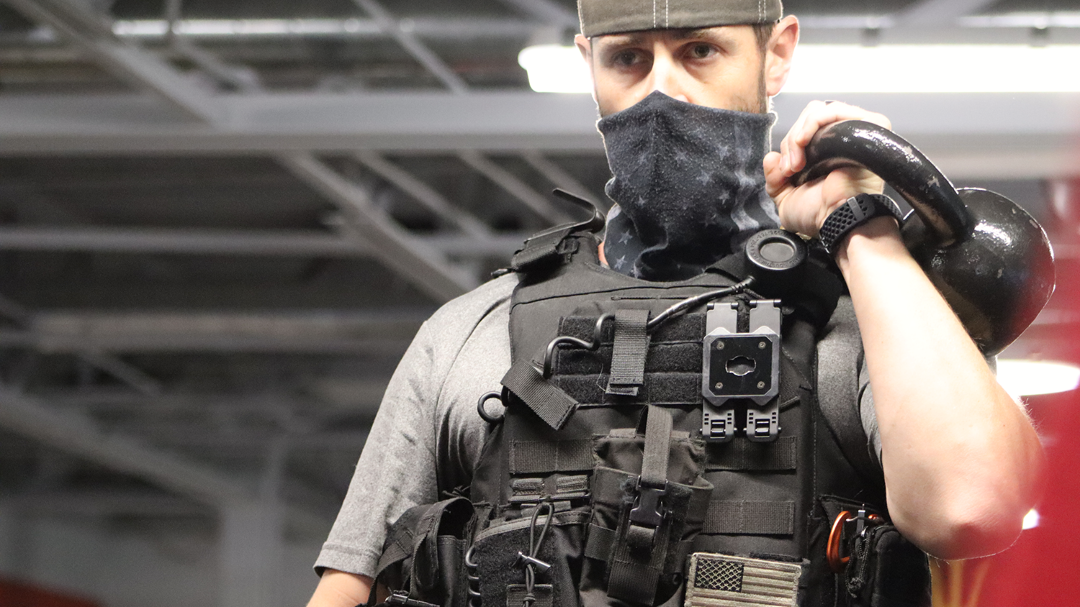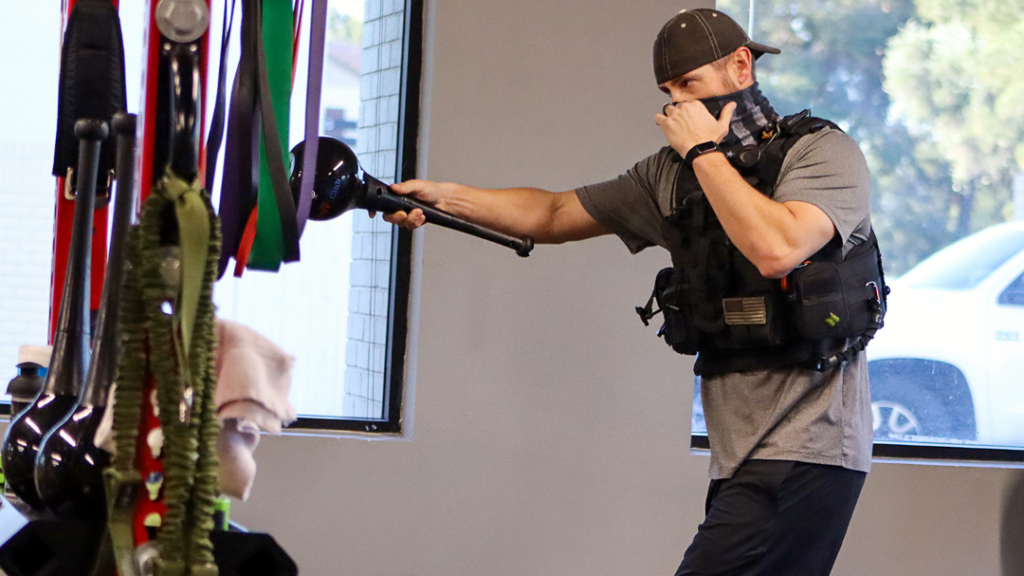By: Ben Kelto, PT, DPT, OCS, CSCS and Samuel Gesicki, PT, DPT
On and off season, athletes push themselves to their physical limits. Track athletes challenge human capabilities of speed. Gymnasts defy physics. Soccer players meld agility and control to push themselves to perform their best. All athletes push the barriers of human capability. The tactical athlete is no different. Well, maybe a little. They perform athletically while wearing gear weighing anywhere from 10 to over 100 pounds.
Law enforcement, military, fire fighters, SWAT, and similar groups can be defined as tactical athletes. These athletes perform every single day at the top of their ability because their life and other peoples’ lives depend upon it. Physically, they are holding sustained postures, climbing stairs, hiking distances, running, and so much more. However, all of these activities are performed under load. The weight of the gear the tactical athlete carries depends on the needs of the call. A SWAT officer may carry forty-five-pounds worth of gear in addition to their twenty-five-pound armored vest. Or, an undercover officer may have several pounds of gear for personal protection. Each athlete still has to complete their mission despite the load imposed by gear, and even light gear can be heavy at the end of the day.
No Off-Season
The tactical athlete doesn’t have an off-season. Their careers are their seasons, and there are often periods of increased training for fitness tests or skill acquisition for duty. Being “on” one-hundred percent of the time, the athlete can experience aches, pains, and even injuries simply due to overworking the body while moving under the constant load of their equipment.
When the athlete comes to physical therapy due to discomfort, pain, or injury, they can’t lessen their professional activity level like other athletes. Duty requires them to be fully present and active, so being capable of working with their normal load is important. In physical therapy, it is important to keep in mind any increased activity, heavier loads, and/or repetitive movements the athlete took on before walking into the clinic. Every step is a rep for the tactical athlete because of the gear they carry, so cumulative load management is important in the clinic in order to avoid injury aggravation. These are modifications to the session based on the physical and mental demands of the field.
Cumulative Load Management
One modification is varying the resistance placed on the athlete based on their work-activity level. In treatment, this could mean unloading or utilizing lighter loads. Similarly, if the tactical athlete repetitively performed a motion during the work week that possibly aggravated an injury – like climbing multiple stories of stairs – removing that exercise in treatment and replacing it with something that engages the same muscle group can be beneficial. This, combined with strength training, allows for active recovery from the wear and tear that comes with the job while rehabbing an injury.
Another strategy in rehab is asymmetrical loading. Rather than adding heavy weight onto the athlete, lightly loading one side of the body helps improve muscle stabilization and correct strength imbalances without adding significant additional body stress. Examples of asymmetrically loading are performing box step ups with a kettle bell raised above the head in one hand or having a weight extended away from the body while practicing crouched gait. Both of these simulate a part of the athlete’s day-to-day activities with good functional crossover.
Training for improving body and spatial awareness is also critical for the tactical athlete. While the saying goes a “tight pack is a light pack”, gear is going to potentially be moving around and throwing off their balance. Training reactive and anticipatory dynamic balance while wearing a weighted vest or other form of external resistance is important to improve the tactical athlete’s ability to find their footing in unpredictable environments.
A final modification to aid in cumulative load management is utilizing Blood Flow Restriction training (BFR). BFR utilizes a medical tourniquet to reduce blood returning from a limb, which can result in rapid fatigue. Light resistance with high repetitions of movements can be used effectively with BFR to aid in muscle activation and gain while allowing tissues to heal. The high reps and fatigue give the athlete the opportunity to mentally push through intense physical discomfort. Being able to push through the fatigue in BFR mimics the mental toughness the athlete faces in the field with a low risk of further injury or perpetration of injury.
Injury Reduction
Reducing the likelihood of injury is always the goal and is best accomplished by a strength and conditioning program designed for the tactical athlete. Differing methods of periodization are required based on the needs of the athlete. The therapist and performance trainer can also progress, regress, and lateralize athlete’s training program to account for changes in weekly or monthly workload. This allows for aiding in longevity of the athlete’s career as well as preparing for any uncontrollable situation that could occur physically.
If you are a tactical athlete, we appreciate your service, and we want to help you maximize your training and injury recovery.
If the military medicine of fresh socks, hydration and Vitamin Ibuprofen are not enough to reduce your pain, or if you want to improve your performance, please contact Ben and Sam at Spooner Uptown or a member of the Spooner team at a clinic near you!


